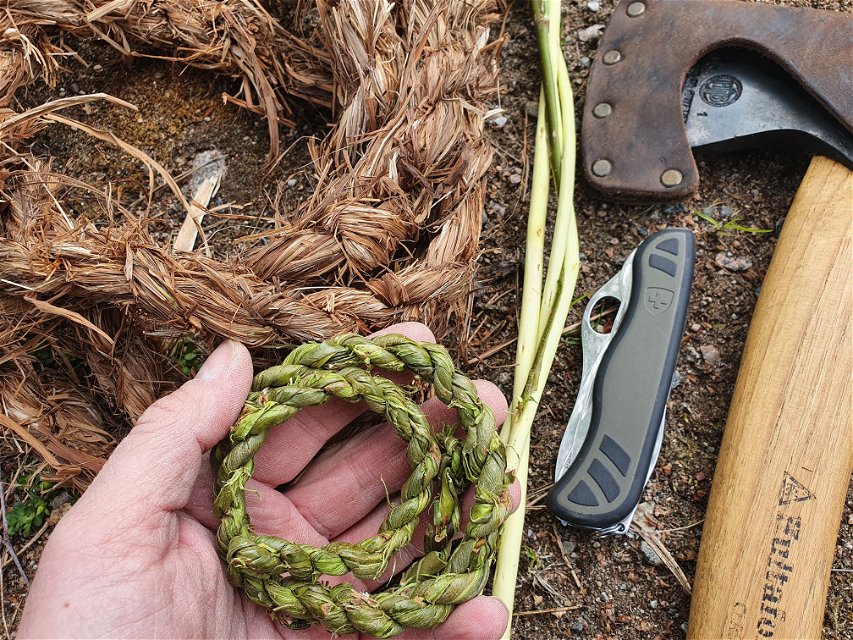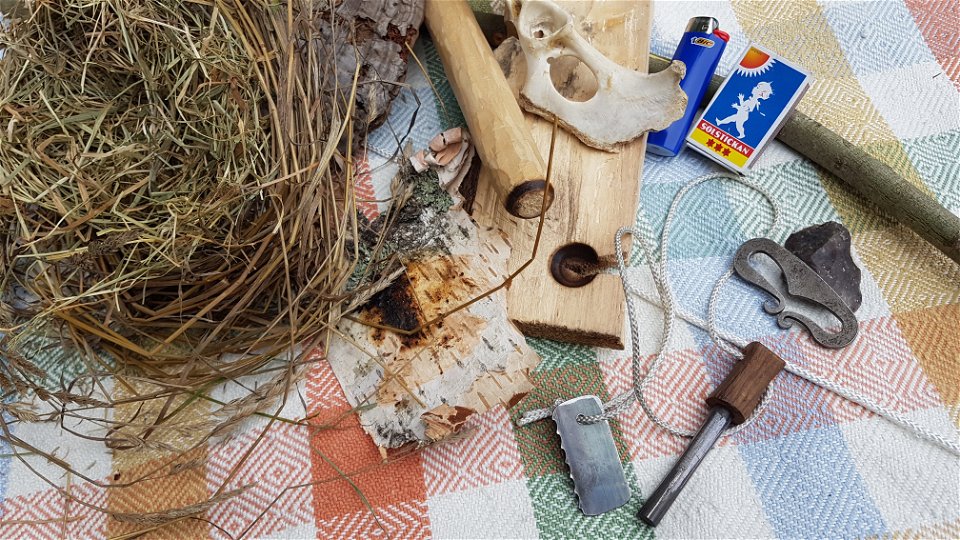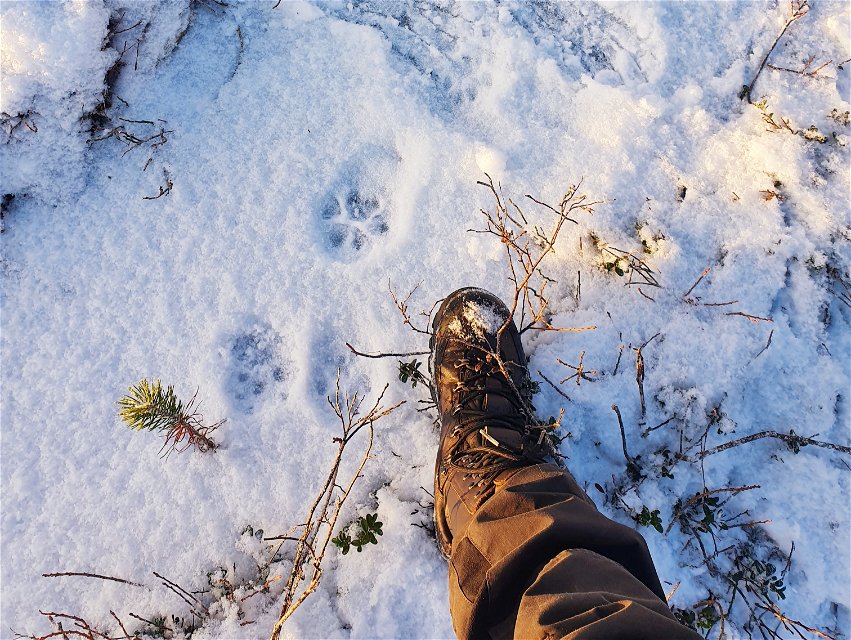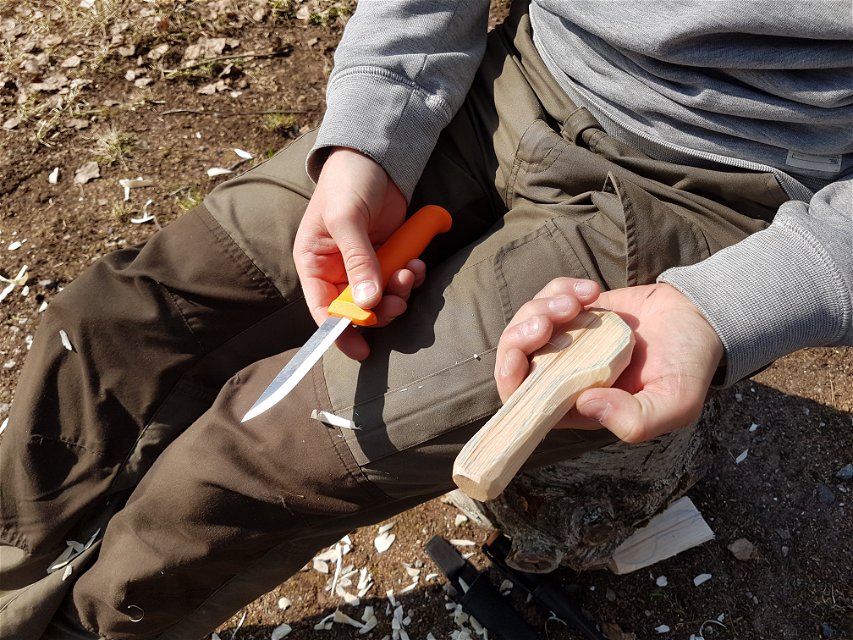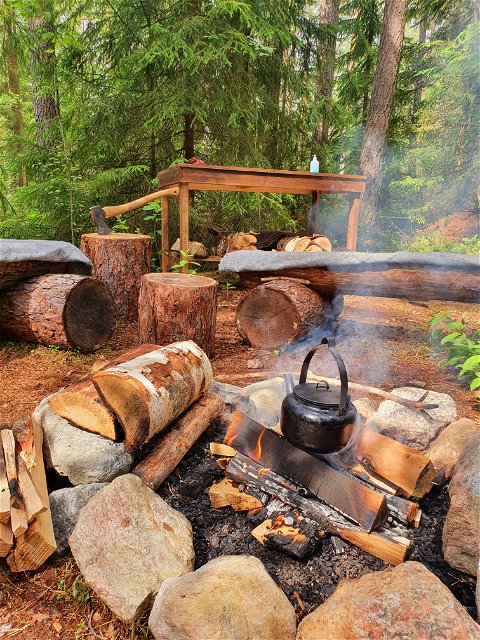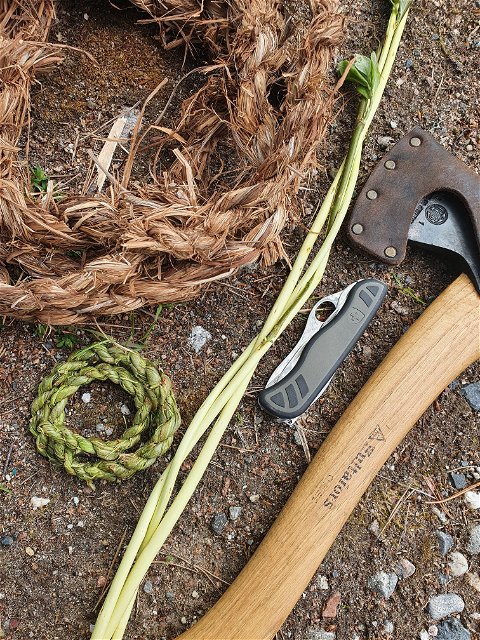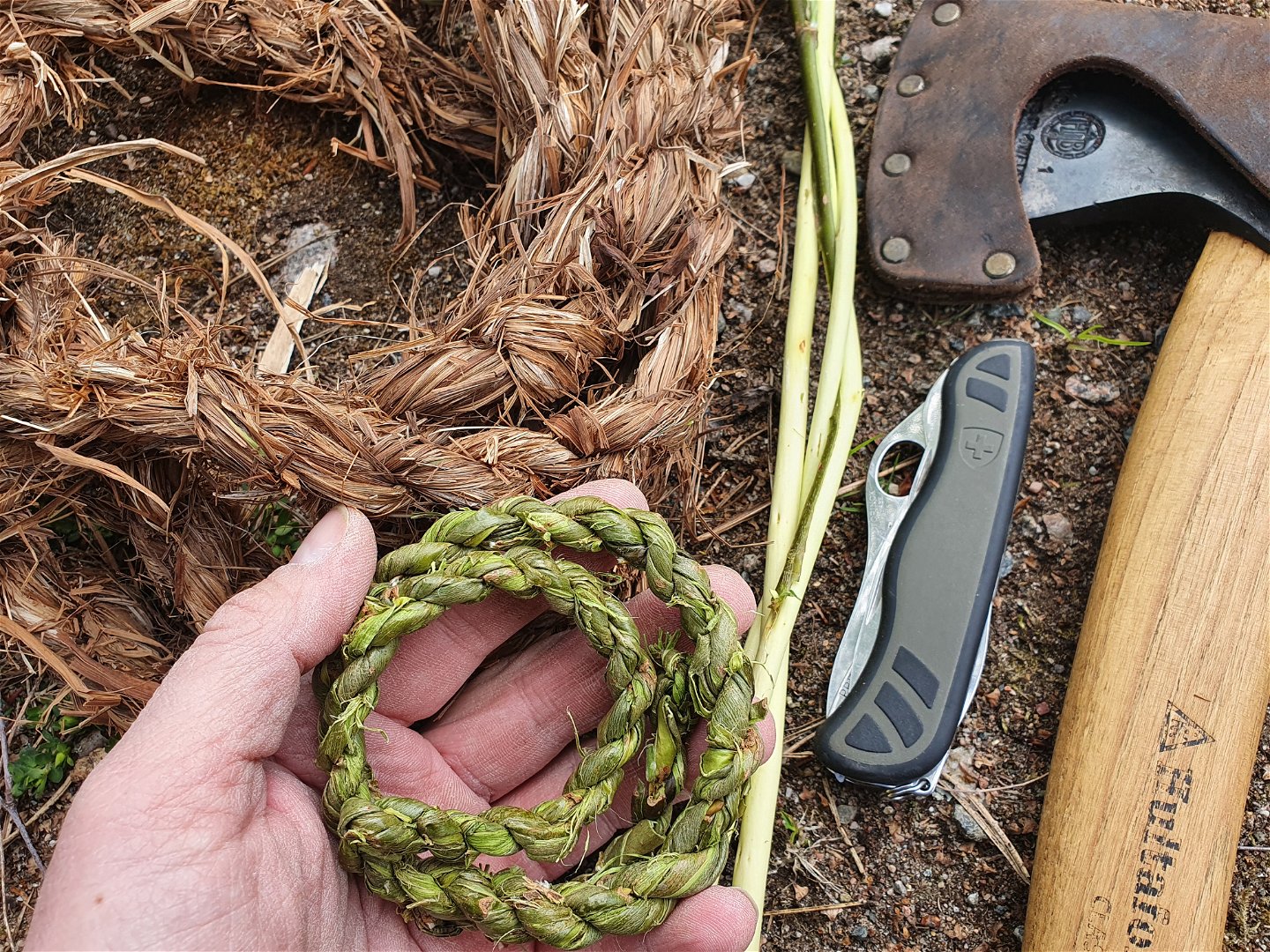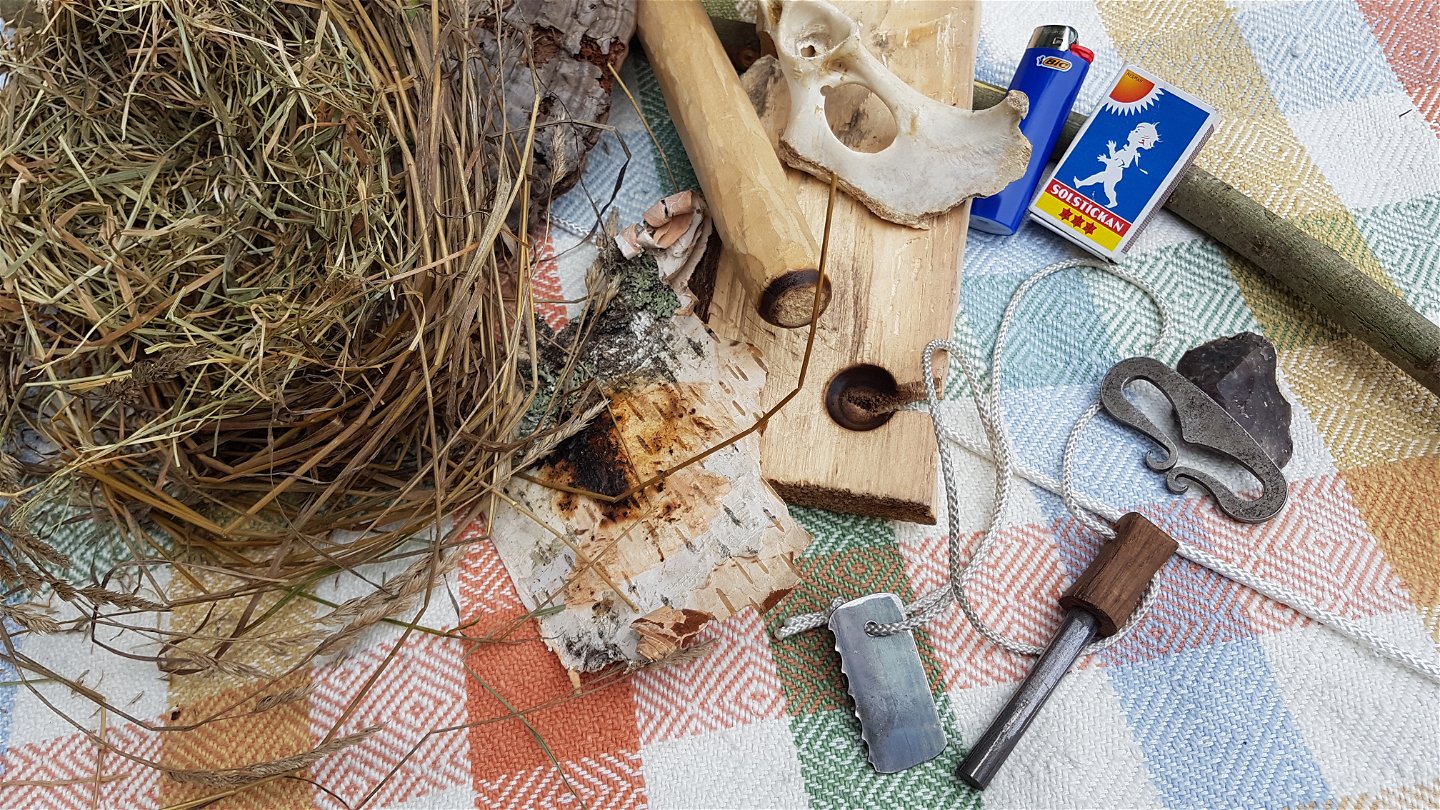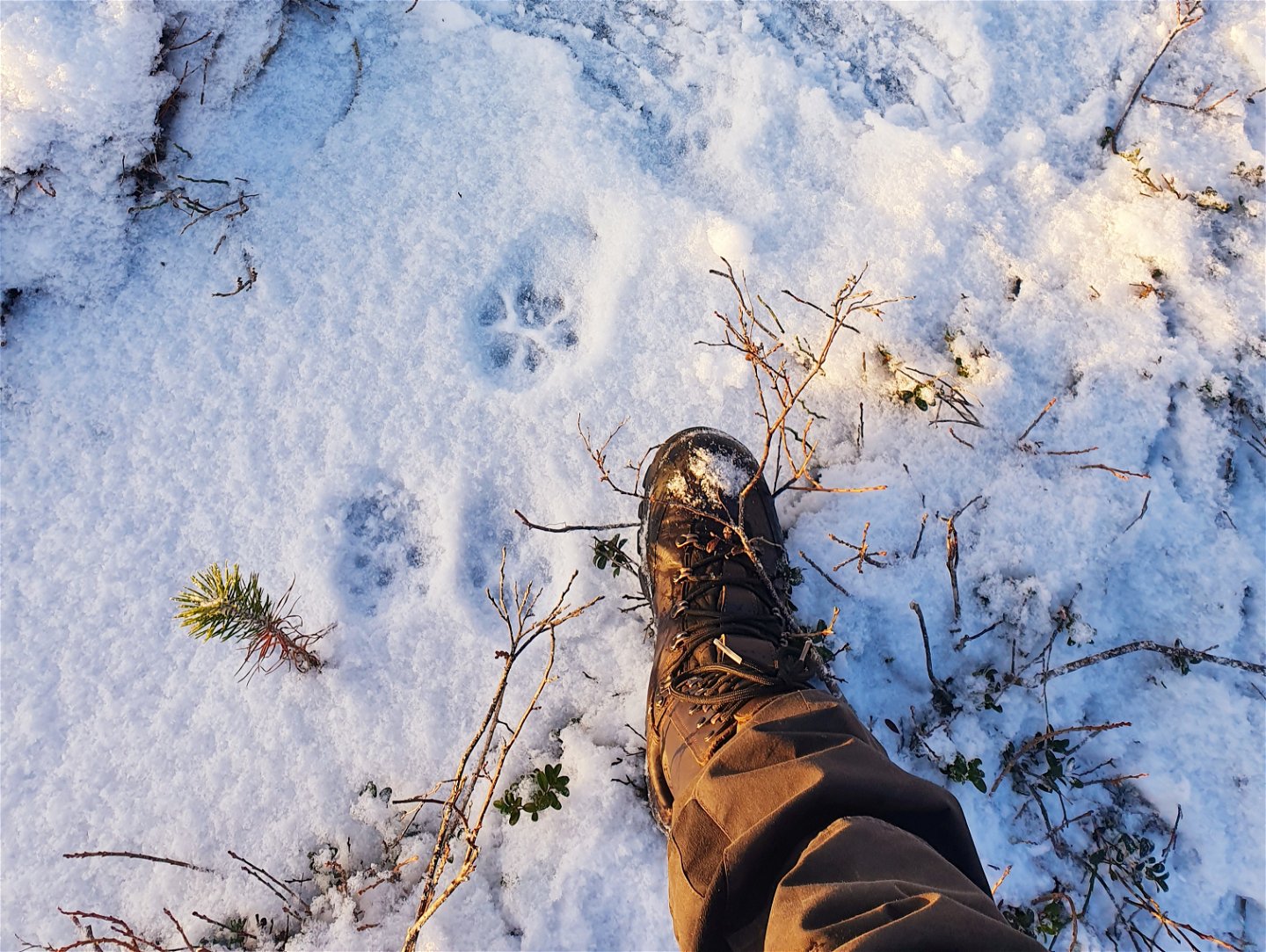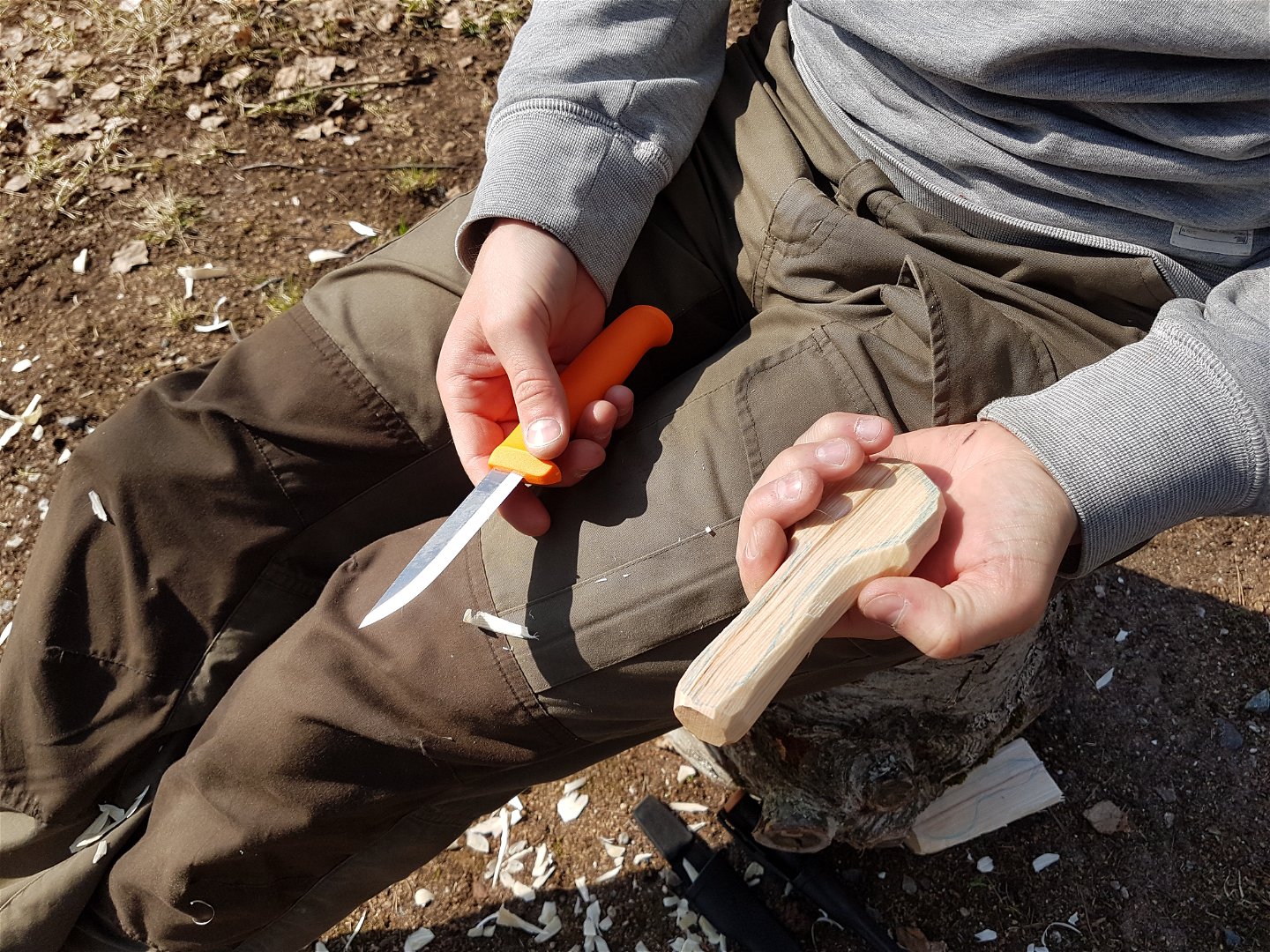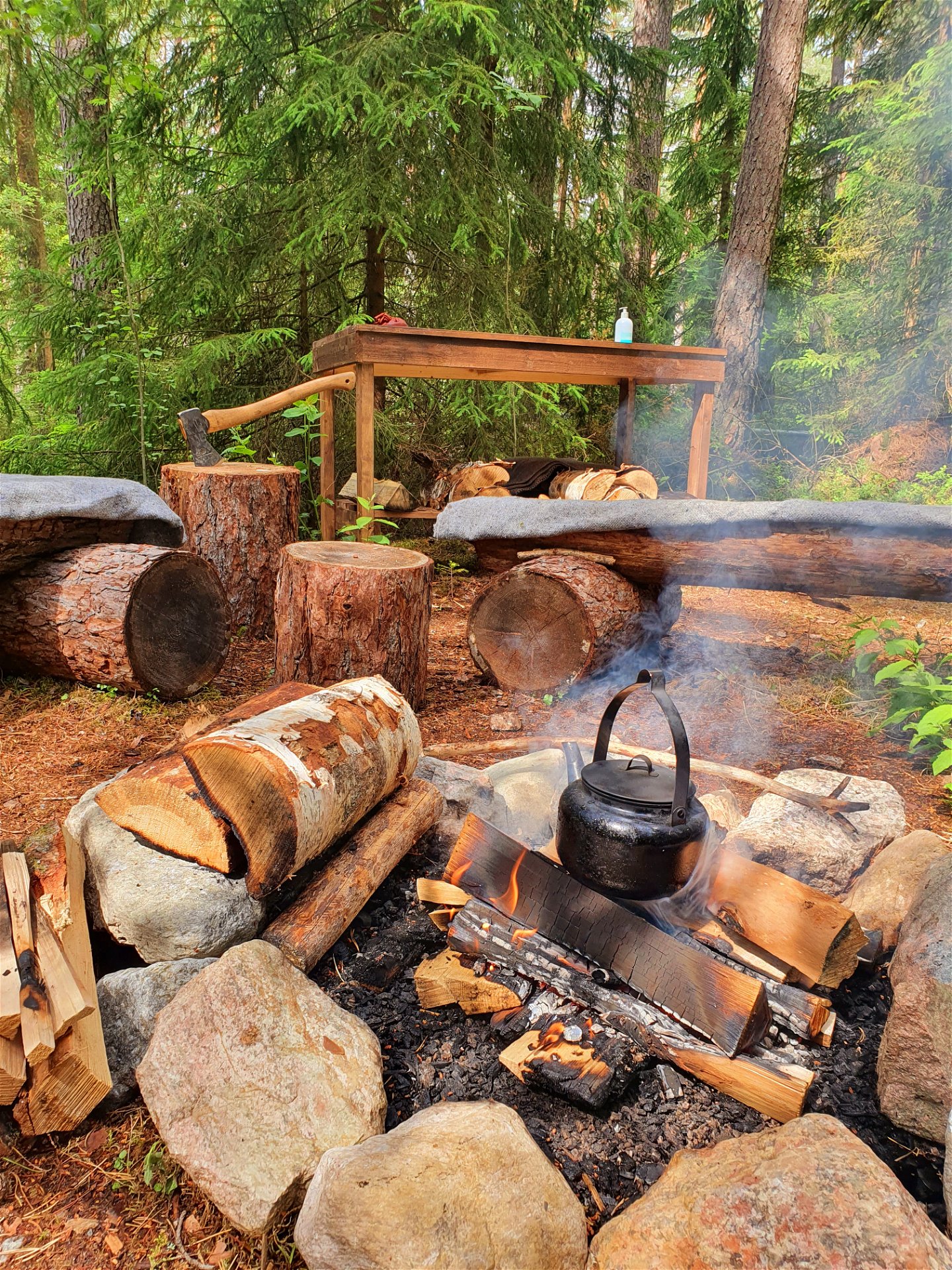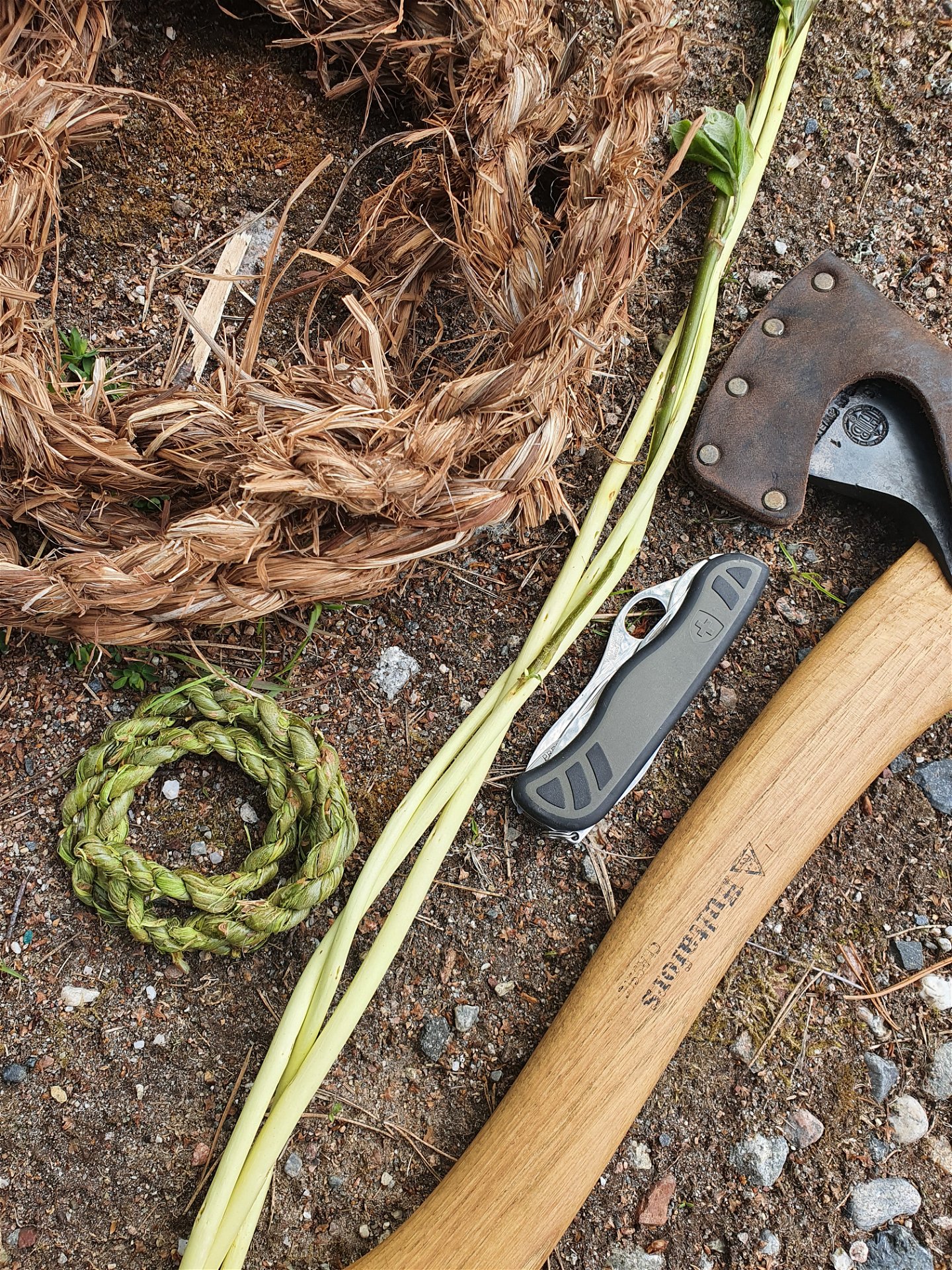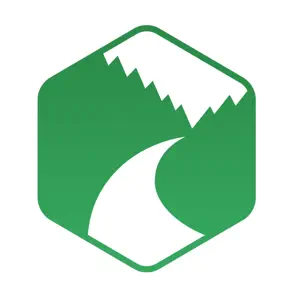Bushcraft
Images
What is Bushcraft?
Among those who love trekking out for peaceful stays in nature, Bushcraft has become an inspiring balm for both body and soul. But what is Bushcraft?! Bushcraft is a collective name for the more rustic outdoor life, often with a historical connotation. The word “Bushcraft” has been used in different parts of the world for a long time, but it is relatively new here in Sweden. A Swedish translation of the word could perhaps be “Vildmarkskunskap”.
Bushcraft deals with the exciting knowledge of how you can make yourself comfortable in the wild, in a simple and humble way, within nature’s conditions. It focuses on knowledge, craftsmanship, and the pleasantness of the wilderness. If you want to know more about Bushcraft, there is much to learn from history and the stories of how our ancestors survived all the seasons of nature. But one of the most important sources of wilderness knowledge is to go out and spend time in the forest yourself. Västmanland's fantastic wilderness is perfect for this!
Bushcraft has many different skills and techniques. This article looks at some of the core aspects of Bushcraft.
Fire
Fire has a central role in Bushcraft. Fire helps keep you warm in the cold, dry when you’re wet, and cook your food. The comfort factor of fire should not be underestimated either. With the knowledge of how to control fire, primitive humans developed into what we are today.
But with fire, there always comes a great, yet rewarding, responsibility. You should always respect any bans on campfires or grilling in the area where you’re staying. You can find all current information relating to fire bans on the website of the municipality in which you’re staying.
You should also learn to handle fire in order to have a richer outdoor life! Lighters and newspapers work great with firewood (split and dried wood) for building a campfire out by a wind shelter. But to enhance your bushcraft skills, you can try your hand at the art of making fire with more primitive techniques like friction, a fire starter, or flint and steel. Instead of using newspaper as kindling, you can perhaps use birch bark, pine nuts, or dry grass. Making a conscious effort to learn and practise these traditional techniques is super fun, but it also gives you gratitude and appreciation for your modern lighter, which you may have previously taken for granted.
Knives and cutting tools
To streamline the above-mentioned fire-making techniques, one’s skill with knives, axes, and saws must come into play. Like fire, these cutting tools have also helped humanity develop throughout history to where we are today. By processing fibres from plants and trees, you can more easily start a fire, collect fuel (wood) and construct useful implements around the campfire. It's fun to build shelters and carve barbecue sticks and spoons with these kinds of tools. The knife is perhaps the most common tool you carry with you during your hiking, canoeing or camping trip. A sharpened knife, combined with the right knowledge, will help you with things like splitting kindling, carving feather sticks and creating sparks from your fire starter.
Tracks and signs of wildlife
At some point, you’ll be sure to come across exciting signs of wildlife in nature. These tracks could be created by any of the interesting animals we share the forests with. In the winter, track marks and paths are very clear in the snow. In the bare-ground seasons, you have to pay much more attention to find animal tracks. With Bushcraft's fun tracking skills, a sign of wildlife can tell what kind of animal passed, when it happened, if the animal was alone, and if it ran or walked. If you ever decide to follow an animal’s tracks, do so respectfully without stressing it. Feel free to backtrack. Other signs that can be useful are the natural indications that can help you navigate or find water. The sun, stars, plants, and animals can help you with all of that. The sun, for example, rises in the east. Here, in the northern hemisphere, when the sun is at its highest in the middle of the day, it’s in the south. And sets in the evening in the west. The sun itself can thus be a guiding natural sign, as well as the shape of plants depending on the path of the sun in the sky.
Useful plants
Plants are fantastic, beautiful and practical. Your firewood may be the wood of an aspen tree, your kindling may be the bark of a birch tree, and your tinder might come from some hoof fungus growing on a tree.
If you boil tree sap, you can, among other things, use the resulting tar as a sealing glue when you make a canoe. Bushcraft skills of twisting plant fibres into cords and ropes allow you to, for example, create fire via friction using the bow drill technique. Not to mention all the spruce leaves that can serve as a nice bed in the shelter you built yourself. Some plants can be used to colour things. Several plants also feature active ingredients that can be found in many different medicines.
And last, but not least, nature has a lot of delicacies, everything from lichen, bulrush and dandelions to berries, pine needles and rosehips. The main rule here is to only eat what you feel completely safe with.
Sustainability
Much in Bushcraft is about sustainability. You should strive for a small pack filled with well-chosen equipment of solid and good quality that guarantees it will be reliable today and tomorrow. Knowing how to best care for your equipment means it can be passed down for generations. Bushcraft is the opposite of "wear-and-throw". Many Bushcraft enthusiasts even craft their own tools and clothing. The equipment does not have to be expensive, old tried and tested solutions often win in the long run. A well-used and cared-for woollen blanket or axe can thus carry with it exciting stories about peaceful forest sojourns to share with later generations. Another aspect of sustainability within Bushcraft is the ambition not to harvest more from nature than you need. This can be applied to collecting firewood, picking mushrooms, hunting and fishing, among other things. And what you do harvest, you then try to use as efficiently as possible. Out of respect for nature, nothing should go to waste.
Tips for the new bushcraft enthusiast
Bushcraft is fun, useful and for everyone! Here are some tips for you who want to start:
- Don't rush your stay in nature. Stay out for a reasonable period of time. It should be a pleasant experience with Bushcraft.
- Keep it simple. You don't have to buy the most expensive and latest equipment to do things right. Jeans, boots and a knitted hat work perfectly.
- Respect the forest, wildlife and people you meet out there. Don't disturb the inhabitants of the forest, and take your trash with you out of the forest. Leave no trace and remember the words of Sweden’s right of public access (allemansrätten): “do not disturb, do not destroy”.
- Keep up to date with the local rules of the current landowner or municipality of the location where you are staying. This is very important if you want to break branches, build a fire, fish or hunt in the area.
- It is a good idea to share your experiences in nature by bringing along a friend or two, especially for safety reasons. And don't forget to have at least one person bring a fully charged mobile phone.
- Learn as much as you can about Bushcraft and nature. Borrow fantastic books from the library about forests, wildlife, fieldcraft, and Bushcraft culture. You can also find a lot of information on the internet. And these days, there are also Bushcraft courses, where you can learn a lot in a hands-on environment.
Take good care of yourself, and we'll see you out there on the Västmanland trails!
Contact
Email address
Organization logotype


